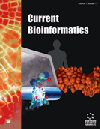
Full text loading...
We use cookies to track usage and preferences.I Understand
Cancer has emerged as the “leading killer” of human health. Survival prediction is a crucial branch of cancer prognosis. It aims to estimate patients' survival risk based on their disease conditions. Accurate and efficient survival prediction is vital in cancer patients' treatment and clinical management, preventing unnecessary suffering and conserving precious medical resources. Deep learning has been extensively applied in cancer diagnosis, prognosis, and treatment management. The decreasing cost of next-generation sequencing, continuous development of related databases, and in-depth research on multimodal deep learning have provided opportunities for establishing more functionally rich and accurate survival prediction models.
The current area of cancer survival prediction still lacks a review of multimodal deep learning methods.
We conducted a statistical analysis of the relevant research on multimodal deep learning for cancer survival prediction. We first filtered keywords from 6 known relevant papers. Then, we searched PubMed and Google Scholar for relevant publications from 2018 to 2022 using “Multimodal”, “Deep Learning” and “Cancer Survival Prediction” as keywords. Then, we further searched the related publications through the backward and forward citation search. Subsequently, we conducted a detailed analysis and review of these studies based on their datasets and methods.
We present a comprehensive systematic review of the multimodal deep learning research on cancer survival prediction from 2018 to 2022.
Multimodal deep learning has demonstrated powerful data aggregation capabilities and excellent performance in improving cancer survival prediction greatly. It has made a significant positive impact on facilitating the advancement of automated cancer diagnosis and precision oncology.

Article metrics loading...

Full text loading...
References


Data & Media loading...

